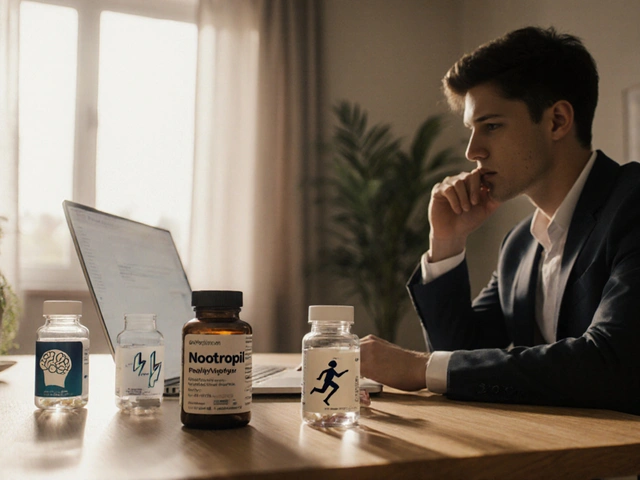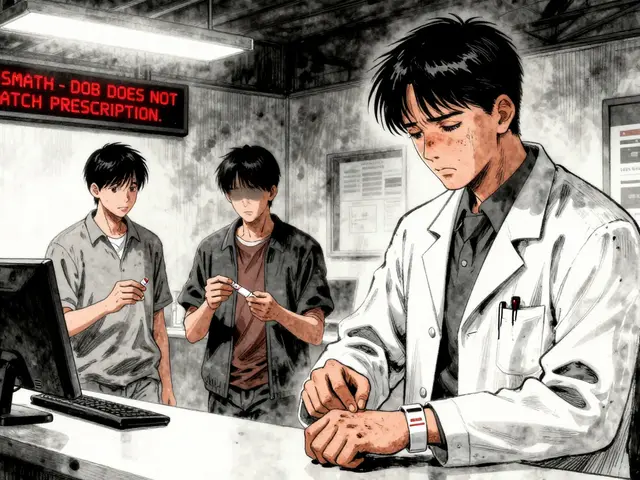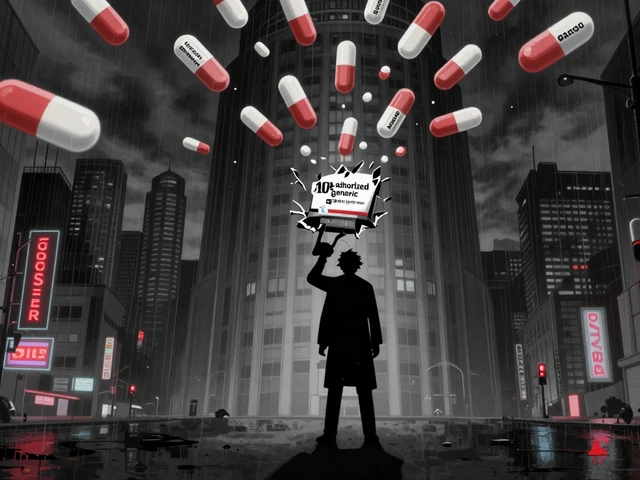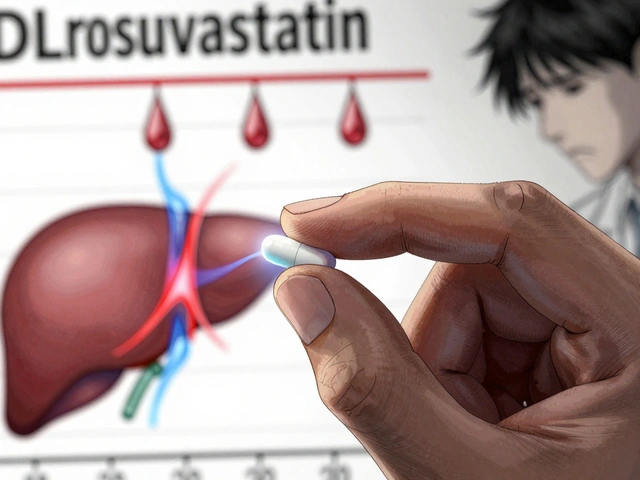After a broken wrist, a sprained ankle, or even minor surgery, most people expect pain to fade over weeks. But what if the pain doesn’t just stick around-it gets worse? What if your skin feels like it’s on fire from a light touch, or your hand swells up for no clear reason? This isn’t normal healing. This could be complex regional pain syndrome-a misunderstood, often misdiagnosed condition that turns a simple injury into a lifelong battle.
What Exactly Is CRPS?
Complex Regional Pain Syndrome, or CRPS, is a chronic pain condition that usually shows up after an injury to an arm, leg, hand, or foot. It’s not just pain from the original damage. It’s pain that’s out of control-way more intense than the injury should cause. The pain feels like burning, stabbing, or electric shocks. It doesn’t go away with rest or painkillers. And it often spreads beyond the site of the injury.
Doctors used to call it Reflex Sympathetic Dystrophy (RSD). Now, they split it into two types: CRPS Type I (no confirmed nerve damage) and CRPS Type II (with clear nerve injury). About 90% of cases are Type I. That means you can have severe, burning pain even if an X-ray shows nothing broken. It’s not in your head. It’s in your nervous system.
The problem? Your nerves get stuck in overdrive. They keep sending pain signals to your brain, even when there’s no tissue damage left. Your brain starts to believe the pain is real-and then it amplifies it. This isn’t just a nerve issue. It’s a full-system malfunction involving inflammation, immune responses, and how your brain processes pain.
Why Does the Pain Feel Like Fire?
People with CRPS describe their pain as burning, scalding, or like their skin is being ripped open. That’s not exaggeration. Studies show the pain is real, measurable, and tied to abnormal nerve activity. Tiny nerve fibers-called C-fibers-that normally carry temperature and light touch signals, become hypersensitive. They start firing constantly, even when nothing is touching the skin.
On top of that, your body’s inflammatory response goes rogue. Chemicals that should help healing stick around too long. Blood vessels dilate, causing redness and warmth in the early stages. Later, the limb might turn cold and blue. Skin becomes thin, shiny, and unusually sweaty. Nails grow faster or become brittle. Hair may grow faster or stop growing altogether.
One of the most telling signs? Temperature difference between limbs. A limb with CRPS can be 0.5°C to 1.5°C warmer or cooler than the other side. That’s not something you feel in daily life-but a thermal imaging camera can spot it easily. This is why doctors sometimes use infrared scans to help confirm a diagnosis.
What Triggers CRPS?
CRPS doesn’t come out of nowhere. It usually follows an injury. The most common trigger? A fracture-especially in the wrist. About 40% of cases start after a broken bone. But it can also happen after:
- Surgery (like carpal tunnel release or knee arthroscopy)
- Deep cuts or lacerations
- Crush injuries
- Even minor sprains or bruises
And here’s the twist: sometimes, there’s no obvious injury at all. The NHS confirms that CRPS can develop without any trauma. That’s why many people are misdiagnosed for months-or years-before someone considers CRPS.
It’s not about how bad the injury was. A person with a small cut can develop CRPS. Another person with a broken arm might never get it. Why? No one knows for sure. But women are three times more likely to get it than men. Most cases happen between ages 40 and 60, though teens and older adults can be affected too. Some research suggests genetics might play a role, but no single gene has been identified.

How Is CRPS Diagnosed?
There’s no blood test. No X-ray. No MRI that can say “yes, this is CRPS.” Diagnosis relies on clinical signs and the Budapest Criteria, established by the International Association for the Study of Pain in 1994 and still used today.
To be diagnosed, you need to have:
- Pain that’s ongoing and disproportionate to any initial injury
- At least one symptom in three of these four categories:
- Sensory: increased pain from light touch, heat, or cold
- Vasomotor: temperature or color changes in the skin
- Sudomotor/edema: swelling, sweating changes
- Motor/trophic: weakness, tremors, muscle spasms, changes in hair/nails
- At least one sign (observable by a doctor) in two or more of those same categories
- No other condition that explains the symptoms
Early diagnosis is critical. If you’re still in pain six weeks after an injury-and it’s getting worse, not better-ask your doctor about CRPS. The longer it goes untreated, the harder it is to reverse.
Treatment: What Actually Works?
There’s no magic cure. But early, aggressive treatment can stop CRPS from becoming permanent. The goal isn’t to eliminate pain overnight-it’s to retrain your nervous system.
Physical therapy is the cornerstone. Not rest. Not immobilization. Movement. Even if it hurts. Gentle exercises, stretching, and graded motor imagery help your brain unlearn the pain response. A 2022 study found patients who started physical therapy within the first 3 months had significantly better outcomes than those who waited.
Medications are used to calm the nervous system:
- NSAIDs (like ibuprofen) for early inflammation
- Corticosteroids (like prednisone) in the first few months to reduce swelling
- Neuropathic pain drugs: gabapentin, pregabalin, amitriptyline
- In severe cases: ketamine infusions or nerve blocks
Some patients benefit from spinal cord stimulation-a device implanted under the skin that sends mild electrical pulses to block pain signals. Others get sympathetic nerve blocks, where an anesthetic is injected near nerves in the spine to temporarily reset the system.
But here’s the truth: most treatments work best in combination. One drug alone won’t fix it. One therapy alone won’t fix it. You need a team: a pain specialist, a physiotherapist, and sometimes a psychologist. Because CRPS doesn’t just hurt your body-it eats at your sleep, your mood, your ability to work, to hug your kids, to hold a coffee cup.

The Emotional Toll
Chronic pain changes you. People with CRPS are more likely to develop anxiety, depression, and PTSD. The constant pain, the disbelief from others (“It’s all in your head”), the loss of independence-it’s isolating.
Dr. Pamela T. Bustos at Stanford says CRPS creates a “cycle of pain” that traps the body and mind. That’s why cognitive behavioral therapy (CBT) is now part of standard care. It doesn’t make the pain go away-but it helps you live with it without being controlled by it.
Many patients say the hardest part isn’t the burning-it’s the loneliness. Friends stop asking. Employers grow impatient. Doctors run out of answers. That’s why support groups matter. Talking to someone who gets it-really gets it-can be more healing than any pill.
Can CRPS Go Away?
Yes. Sometimes. About half of people see improvement within a year, especially if treatment starts early. Some recover fully. Others are left with mild discomfort. A smaller group-maybe 20%-live with moderate to severe pain for years, even decades.
There’s no guarantee. But the odds improve dramatically with early action. Waiting six months? That’s when the condition becomes harder to treat. The nervous system starts rewiring itself permanently. The skin and muscles change. The brain’s pain map gets locked in.
That’s why doctors stress: if you’ve had an injury and the pain isn’t fading-don’t wait. Don’t assume it’s “just healing.” Get checked. Ask about CRPS. Bring the symptoms list. Be your own advocate.
What’s Next for CRPS Research?
Scientists are now looking at autoimmunity. A 2022 study found specific antibodies in 30% of CRPS patients-suggesting the body might be attacking its own nerves. If true, this could lead to new treatments using immune-modulating drugs.
Other trials are testing ketamine, cannabis-based medicines, and virtual reality therapy to retrain the brain. The European Pain Federation has made CRPS a top research priority. The goal? Personalized medicine: match the right treatment to the right patient based on their biology, not just their symptoms.
For now, the best tool we have is awareness. If you’ve had an injury and your pain feels wrong-burning, spreading, worsening-it’s not normal. It’s not weakness. It’s CRPS. And it’s treatable-if you catch it early.











Allison Turner
26 Nov 2025 at 13:03This is just another way doctors make money. Burned my wrist last year, took two weeks and I was fine. Now they want me to see a specialist, get MRIs, try ketamine? Nah. I'm not falling for it.